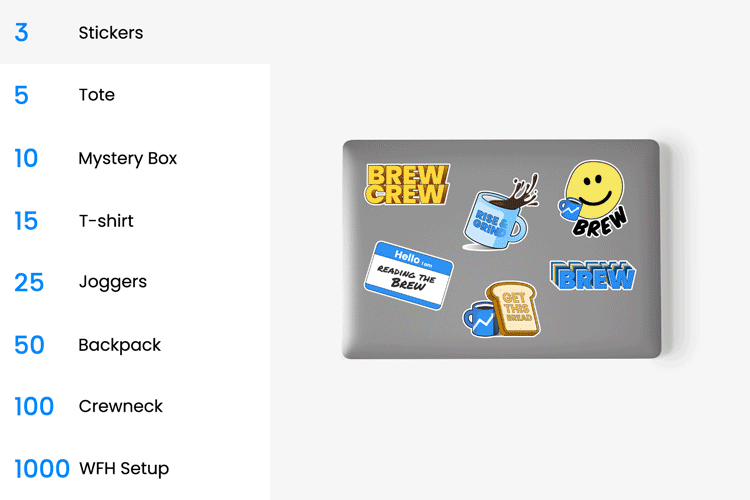It’s Monday. Ad-free versions of Facebook and Instagram have officially rolled out in Europe as a result of new EU privacy regulations, and it starts around $11/month (with a higher cost for iOS/Android users.) Maybe it’s time to check out that new viral social media app Lapse…
In today’s edition:
—Jasmine Sheena, Alyssa Meyers
|
|
Dan Kitwood/Getty Images
Unless you’ve been living under a rock, you know that Twitter has undergone some, well, changes since last October, including a new CEO, a rebrand to X, and and a host of controversies following Elon Musk’s takeover of the company. All the changes and controversies haven’t exactly been great for X’s ad business: The company’s monthly revenue has nosedived almost 60% year over year, according to data from Guideline, and Insider reported that the majority of the world’s highest-spending advertisers have stopped advertising on the platform. Even Musk himself has acknowledged the dramatic drop-off.
But spend hasn’t dried up completely, and through it all, some are still choosing to advertise on the platform. The reason for that, according to David Juul Ledstrup, chief strategy officer at social media marketing firm Kubbco, is simple. It’s kind of a deal.
“You have Black Friday right now, you have Christmas just around the corner,” Ledstrup said. “If you’re a media buyer just looking at ‘Where do I get the biggest bang for my buck,’ X is going to be one of those platforms.”
- While he noted that certain industries like medical, travel, fashion, and beauty can tend to be a bit more brand conscious and thus a “bit reluctant to be on the platform at the moment,” less-established brands, like some e-commerce companies, have seemed to be more open to it.
- “It’s the brands that haven’t built their reputation on being a reputable, larger global brand, but rather [are] known for quick sales or cheap pricing,” Ledstrup said. “They’re very happy to be advertising on a place like X at the moment because they’re getting a lot of value for their money.”
A lot of advertisers who left the platform have reevaluated the role of social media in their marketing mix and made adjustments to marketing strategies that may have previously centered around X, Marshall Shaffer, associate director of media at Ogilvy, said. As a result, brands advertising on X may continue to find lower prices driven by less demand.
Continue reading here.—JS
|
|
PRESENTED BY INTUIT MAILCHIMP
|
It’s that special time of year again. You probably know it all too well. Fierce competition. Countless hours spent fine-tuning messaging and poring over consumer data. ’Tis the season, so that means you need to have strategies in place.
Luckily for you, we teamed up with Intuit Mailchimp to give you an interactive toolkit with solutions to help curb those age-old holiday season marketing headaches. We’re talkin’ actionable strategies backed by stats and research.
Wanna know what we’re covering? You’ll learn how to:
- use segments to better reach your audience
- navigate Black Friday + Cyber Monday
- effectively implement owned channels into your strategies
Say goodbye to seasonal slog.*
|
|
SiriusXM
Radio has gone to the dogs…literally.
As part of a rebranding initiative unveiled this week, the satellite radio turned audio company SiriusXM brought back its one-time mascot, the dog that used to appear on its logo years ago.
The return of the dog, which the company has named Stella, is part of a larger brand refresh for the audio brand that also includes a new logo, a new consumer app with upgraded tech, new content, and new brand partnerships, much of which is designed to attract younger generations of listeners.
Bird’s-eye view: While SiriusXM’s primary audience is made up of radio-native Gen Xers and older, the company sees its “growth audience” as younger, more diverse audio consumers, SiriusXM CEO Jennifer Witz said during a press presentation in New York City.
- That group of consumers is much more familiar with streaming audio than listening to the radio, which is perhaps why SiriusXM’s rebrand includes not just a new design, but an overhaul of its consumer app. Streaming-only app access will run $9.99 per month, less than what the company currently charges for its streaming package.
- “To connect with a new generation of listeners, we needed to solve the barriers that exist today in this group and begin to transform our business,” Witz said on stage. “Traditionally, auto manufacturers have served as our primary source for trials, and while that continues to remain a key part of our business, over the last few years, consumer preferences have shifted.”
Keep reading here.—AM
|
|
Amelia Kinsinger
Practicality is in and purpose is out, according to Forrester’s predictions for B2C marketing in 2024.
The predictions, compiled by Forrester’s team of B2C marketing analysts, are based on economic forecasts and their own research and “are meant to swing big,” according to Mike Proulx, VP and research director of the company’s CMO Practice. The overarching takeaway, he said, is that in 2024, CMOs will lead with practicality, and purpose-driven decisions may take a backseat for the first time in a long time.
“CMOs are under increased pressure to drive profitable growth, and we are entering a year in 2024 where consumers will be more divided than ever before because of what’s going on with our culture war,” Proulx told Marketing Brew. “That’s only going to become more inflamed by the 2024 presidential election that will play out here in the US.”
If purpose goes out the window for some CMOs, Forrester also predicted that more “practical” investments, including in AI and data privacy, will be more front and center in 2024.
Not worth it? Driving the topline prediction was a slight decline (of three percentage points) in the share of US online adults who said they regularly buy from brands that display values in line with their own—marking the first time that share has dropped in four years.
- The report anticipates that nine out of 10 mainstream brands in the US will go quiet on social justice causes and environmental, social, and governance (ESG) concerns, marking a turnaround from recent years in which it’s become more common for companies to speak out.
Some recent brand efforts that have touched those issues have proved more contentious than others, and instances like the backlash to Bud Light’s collaboration with Dylan Mulvaney may have taught brands that taking a stance on social and cultural issues, either inadvertently or intentionally, can be “a risky business choice,” per the report.
- “Speaking out on social values as a brand has become that much more risky because of the contention that exists in the marketplace among consumers. It is a no-win situation at this point,” Proulx said. “We are advising clients that if you’re a brand that is already defined by its social values, then absolutely stay the course. Otherwise, consider the risks before you wade into the culture war.”
Read more here.—AM
|
|
Level up your career with these resources from our sponsors!
|
|
Morning Brew
There are a lot of bad marketing tips out there. These aren’t those.
Boring: Why the trend of “blanding” brand assets might backfire, according to research.
What happens in Vegas: How brands are advertising on the Sphere arena off the Las Vegas strip.
Deck the halls: Digiday breaks down 2023’s Christmas ad trends so far.
|
|
Francis Scialabba
Executive moves across the industry.
-
Nishma Patel Robb is leaving Google, where she was senior director of brand and reputation marketing.
-
Alison Levin, a Roku alum, is NBCU’s new ads president.
-
Mark Kupferman is the new chief insights and marketing officer at Chuck E. Cheese. He previously was an exec at Ruth’s Chris Steak House.
|
|
|
✢ A Note From Intuit Mailchimp
Disclaimer: This is sponsored content.
|
|
ADVERTISE
//
CAREERS
//
SHOP 10% OFF
//
FAQ
Update your email preferences or unsubscribe
here.
View our privacy policy
here.
Copyright ©
2023
Morning Brew. All rights reserved.
22 W 19th St, 4th Floor, New York, NY 10011
|
|










